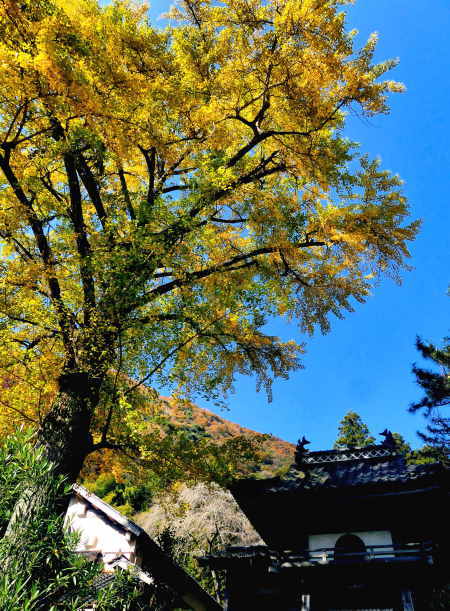Wednesday, December 15, 2021
Finding Koyo at Chokoji Temple
Friday, December 10, 2021
Kannabiji Temple's Gingko
Kannabiji Temple's Gingko
It's that time of the year when I post some pics of this year's autumn colors. About three weeks ago Yoko had a day off that coincided with a beautiful sunny day so we headed off on a local trip to see if we could find some color. The first stop was Kannabiji Temple, a few kilometers upstream on the Gonokawa River.
Wednesday, November 10, 2021
Tenryuji Sogenchi Garden in Autumn
Thursday, March 25, 2021
Autumn Colors at Suizenji Garden
Saturday, March 6, 2021
Matsubase Shrine
Matsubase is a small town in Kumamoto that I reached in the afternoon of my 45th day walking around Kyushu. Matsubase Shrine is the main shrine in the centre of town.
Saturday, January 30, 2021
Shunkoji Temple Yatsushiro
Shunkoji
After four days of following the Kumagawa River downstream, on day 44 of my walk around Kyushu I emerge from the mountains onto the estuary and coastal plain of Yatsushiro.
Tuesday, January 26, 2021
Zuiganji Temple Tokushima
Zuiganji
After visiting Taisanji, the first temple on the Shikoku Fudo Myo Pilgrimage, I headed down the mountain and returned to my room in Tokushima City. There was still some hours of daylight left so I went to the Tourist Information Office and asked about any good gardens for viewing the Fall colors.
Tuesday, December 1, 2020
Gangoji Temple & Kannonzenji Temple
The Sagara Graveyard I visited in Hityoshi was located behind a small temple, Gangoji, and there was a little bit of autumn color around the temple.
Sunday, November 29, 2020
Sagara Family Tombs






























































